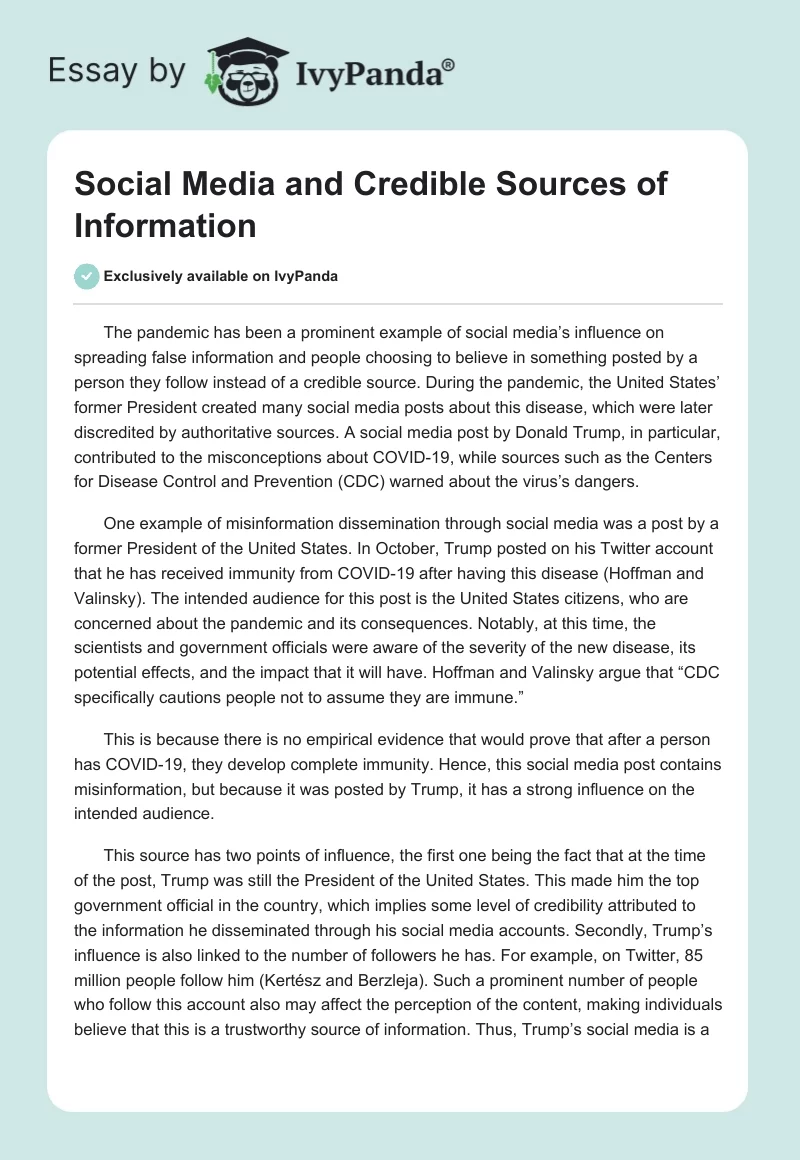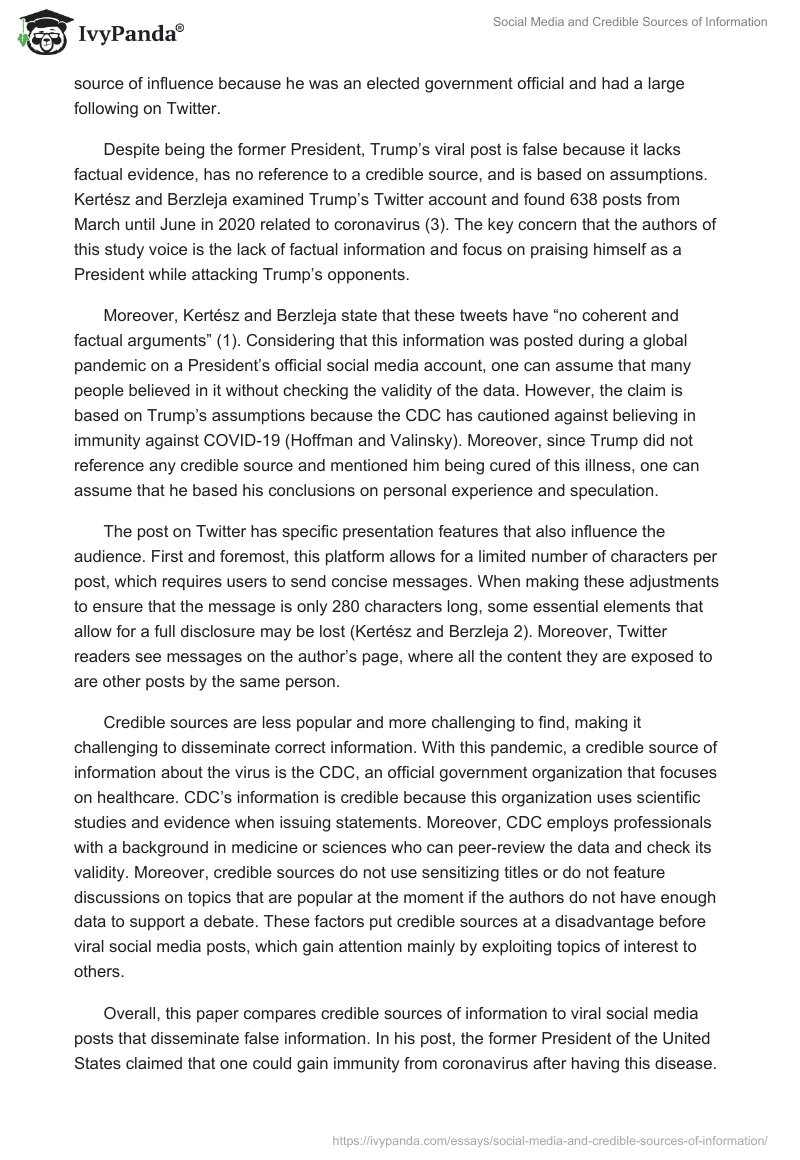The pandemic has been a prominent example of social media’s influence on spreading false information and people choosing to believe in something posted by a person they follow instead of a credible source. During the pandemic, the United States’ former President created many social media posts about this disease, which were later discredited by authoritative sources. A social media post by Donald Trump, in particular, contributed to the misconceptions about COVID-19, while sources such as the Centers for Disease Control and Prevention (CDC) warned about the virus’s dangers.
One example of misinformation dissemination through social media was a post by a former President of the United States. In October, Trump posted on his Twitter account that he has received immunity from COVID-19 after having this disease (Hoffman and Valinsky). The intended audience for this post is the United States citizens, who are concerned about the pandemic and its consequences. Notably, at this time, the scientists and government officials were aware of the severity of the new disease, its potential effects, and the impact that it will have. Hoffman and Valinsky argue that “CDC specifically cautions people not to assume they are immune.”
This is because there is no empirical evidence that would prove that after a person has COVID-19, they develop complete immunity. Hence, this social media post contains misinformation, but because it was posted by Trump, it has a strong influence on the intended audience.
This source has two points of influence, the first one being the fact that at the time of the post, Trump was still the President of the United States. This made him the top government official in the country, which implies some level of credibility attributed to the information he disseminated through his social media accounts. Secondly, Trump’s influence is also linked to the number of followers he has. For example, on Twitter, 85 million people follow him (Kertész and Berzleja). Such a prominent number of people who follow this account also may affect the perception of the content, making individuals believe that this is a trustworthy source of information. Thus, Trump’s social media is a source of influence because he was an elected government official and had a large following on Twitter.
Despite being the former President, Trump’s viral post is false because it lacks factual evidence, has no reference to a credible source, and is based on assumptions. Kertész and Berzleja examined Trump’s Twitter account and found 638 posts from March until June in 2020 related to coronavirus (3). The key concern that the authors of this study voice is the lack of factual information and focus on praising himself as a President while attacking Trump’s opponents.
Moreover, Kertész and Berzleja state that these tweets have “no coherent and factual arguments” (1). Considering that this information was posted during a global pandemic on a President’s official social media account, one can assume that many people believed in it without checking the validity of the data. However, the claim is based on Trump’s assumptions because the CDC has cautioned against believing in immunity against COVID-19 (Hoffman and Valinsky). Moreover, since Trump did not reference any credible source and mentioned him being cured of this illness, one can assume that he based his conclusions on personal experience and speculation.
The post on Twitter has specific presentation features that also influence the audience. First and foremost, this platform allows for a limited number of characters per post, which requires users to send concise messages. When making these adjustments to ensure that the message is only 280 characters long, some essential elements that allow for a full disclosure may be lost (Kertész and Berzleja 2). Moreover, Twitter readers see messages on the author’s page, where all the content they are exposed to are other posts by the same person.
Credible sources are less popular and more challenging to find, making it challenging to disseminate correct information. With this pandemic, a credible source of information about the virus is the CDC, an official government organization that focuses on healthcare. CDC’s information is credible because this organization uses scientific studies and evidence when issuing statements. Moreover, CDC employs professionals with a background in medicine or sciences who can peer-review the data and check its validity. Moreover, credible sources do not use sensitizing titles or do not feature discussions on topics that are popular at the moment if the authors do not have enough data to support a debate. These factors put credible sources at a disadvantage before viral social media posts, which gain attention mainly by exploiting topics of interest to others.
Overall, this paper compares credible sources of information to viral social media posts that disseminate false information. In his post, the former President of the United States claimed that one could gain immunity from coronavirus after having this disease. On the other hand, credible sources warned against the President’s advice. For example, the CDC claims that there is no evidence that would support Trump’s claim.
Works Cited
Hoffman, Jason and Jordan Valinsky. “Twitter Flags Trump’s False Claim about His COVID-19 Immunity. Facebook, However, Does Nothing”. CNN, 2020. Web.
Kertész, Fanni and Zane Berzleja. Donald Trump’s Communication During COVID-19 Pandemic On Twitter. 2020. Malmo University, Master’s Thesis.


